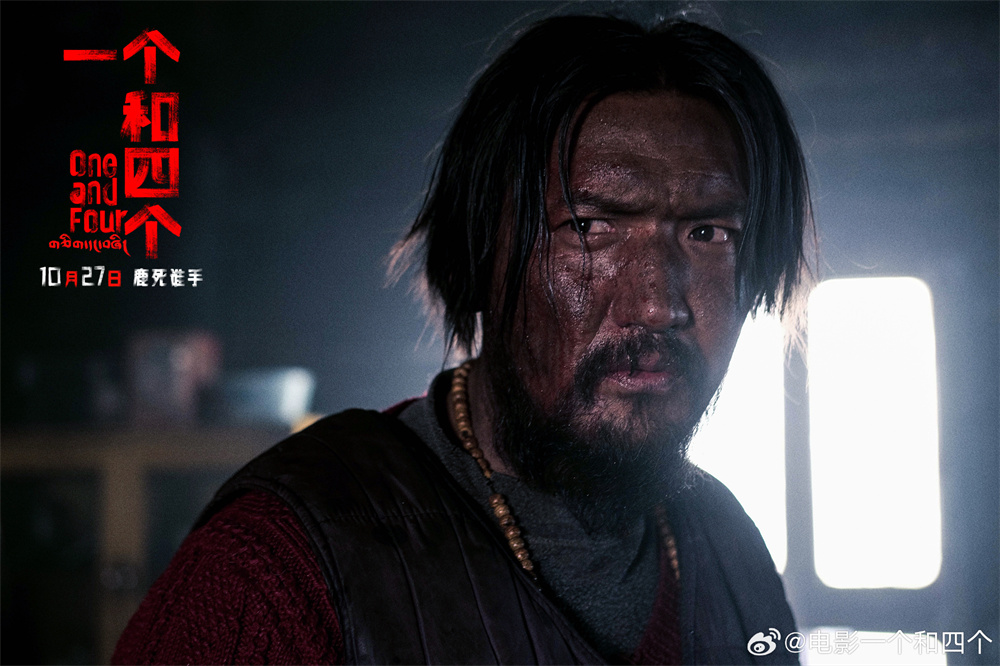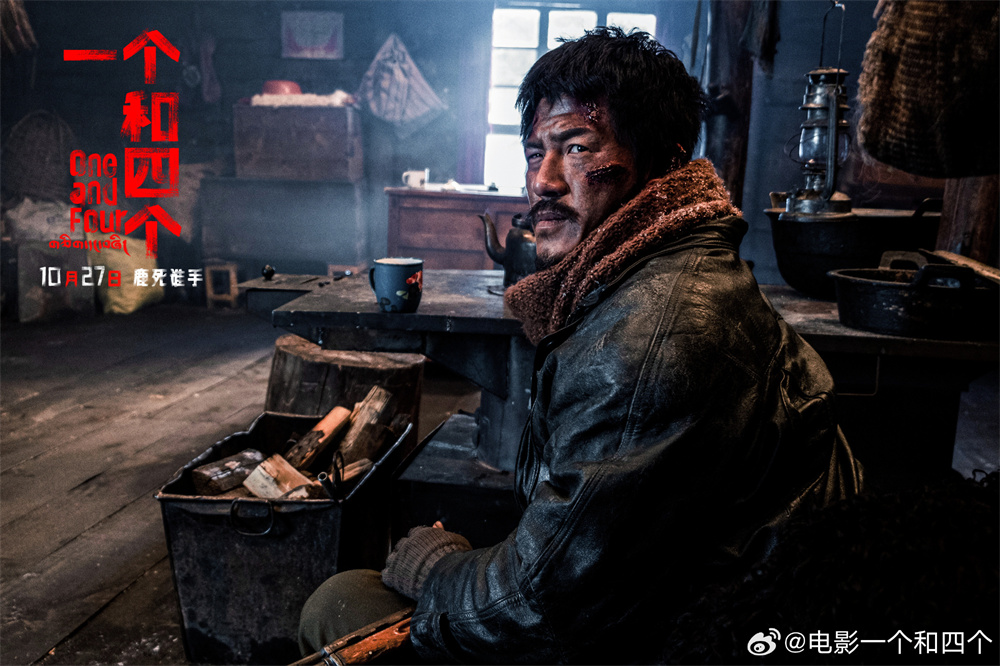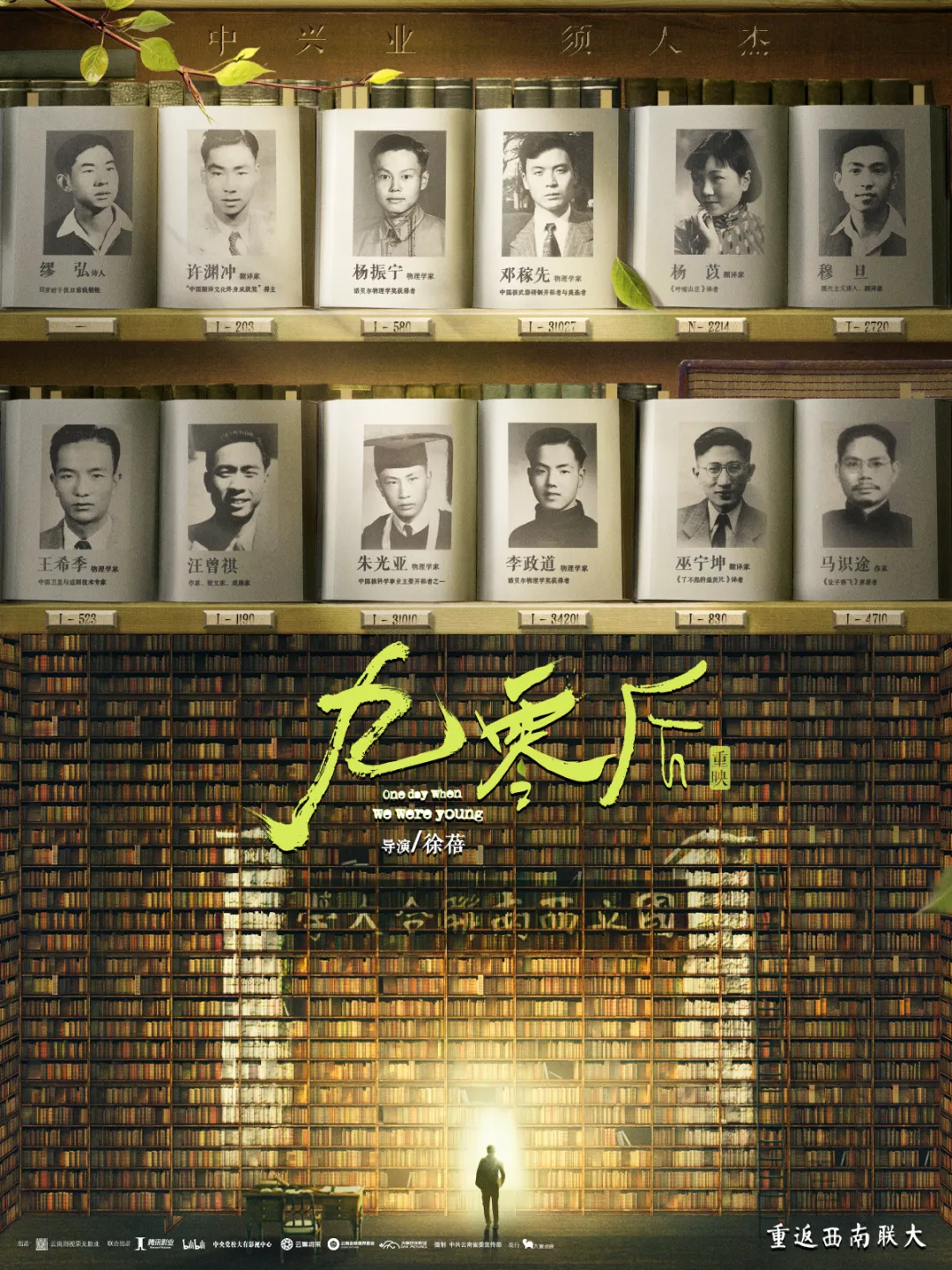
Note: This article contains serious spoilers
The movie "One and Four", released on October 27, is a stunning directorial debut. Tibetan director Jiumei Chenglie, born in 1997, became the youngest main competition finalist in the history of the Tokyo Film Festival with this film. The background of the birth of this work was his graduation work as a recent graduate of the Beijing Film Academy. .
As a movie that combines elements from multiple genres such as Western, police and gangsters, and suspense, the film demonstrates quasi-industrial production standards and mature film techniques that are rare in previous Tibetan literary and artistic films. At the same time, as an experimenter in Tibetan genre films, "One and Four" directed by Kumi Narei has a Rashomon-like narrative structure, and the tone is also filled with the mysterious atmosphere of Tibetan culture.

"One and Four" poster
The "maturity" displayed by "One and Four" as a debut film has been called "technically shocking" when it appeared at many film festivals before. This is undoubtedly due to a group of more mature backbones of contemporary Chinese films. "Guardian" by the main creator, but the new exploration of commercial typification of Tibetan films belongs to the consciousness of the new generation of young creators.
The "Tibetan New Wave" led by Jigme Chenglie's father, Wanma Tseden, has been mentioned for many years. Although it does not have a clear academic definition, it is undeniable that a group of Tibetan filmmakers who have gradually emerged under his leadership have They all began to tell the story of Tibet as they understood it from their own perspectives. As a Tibetan filmmaker who grew up in a different era from his parents, Jigme Chenglie’s issues of concern and the way he tells stories can also be seen in this film. Perhaps we can call it the "New New Wave of Tibet", with precise genres, dynamic audio-visual awareness without losing composure and sophistication, and a "barbaric poetry" flowing in the light and shadow.
One morning before a snowstorm, a lonely forest ranger who was hungry and cold, a policeman who had just lost his comrade, an old bachelor with a doubtful identity, an "imminent" poacher... In the fog, the identities of the real and fake policemen were confusing. Measuring every moment on the sidelines may be the thin line between life and death. The suspenseful feeling is full of judgment and multiple-choice questions about the good and evil of human nature, and the final answer is a thought-provoking Rashomon...

Stills from "One and Four"
The film's story plunges into a tense atmosphere from the very beginning. On the eve of the snowstorm, the ranger and the forest police opened the game with mutual distrust and temptation. The Western classic reasoning narrative model of "Blizzard Villa" is transplanted to the remote, vast and mysterious Tibetan area. In the plot that unfolds from the perspective of the forest ranger, various characters and clues appear and unfold again and again. Under the strong and fierce audio-visual techniques, the plot unfolds Unsettling paradoxes and emotions in the environment.
Kumi Nariye showed excellent control over the rhythm of the film. During the 88-minute plot, the audience was constantly involved in the confusing life and death decisions from the perspective of the ranger, and constantly overturned the clues and clues that seemed to have been given. An immersive Werewolf in the Wilderness, while following the plot with fear, it also burns brain cells and synchronizes the psychological game with the characters in the film.
Although the scenes and characters are not that rich, the tight progression of the overall rhythm and the amount of information contained in the pictures make this film far from boring in terms of viewing. The faces of the Tibetan actors have a rough and wild atmosphere, and they are mature. The performance shows the distortion of human nature of ordinary people in extremely harsh environments. Li Danfeng's extreme sound processing clearly amplifies the details of the materials and movements in the picture, immersing him into the situation through sound, and also showing the character's psychological state of "every tree and grass are at war".

Stills from "One and Four"
Regarding the film's title "One and Four", it will become a question that arouses the audience's interest in many post-screening exchanges. Judging from the perspective, it can be distinguished between the forest ranger and the four people he met during this day - two real and fake forest police officers, the old bachelor Genbao and the policeman who died; judging from the final outcome, the only one alive The ranger and the four people who eventually became corpses; judging from the information known to the audience, the ranger is the only "clear card", and the camp to which the other four people belong is also a mystery; or looking back at the final climax scene, The four people in the house, and the deer who opened the door and quietly looked through everything, seemed to have a higher-dimensional interpretation space. The cruel tragedies caused by deer antler and fox fur become insignificant and absurd in front of nature and her creatures.
All the clues come together, and the high-density flashback editing condenses the various reincarnations of cause and effect. If it were not for the line of small black text added in the end for the reason of "everyone understands", the open ending that ends abruptly can make the audience and Jinba, who looked confused, was caught off guard and stayed there for a long time, unable to recover. The ending of the currently released version is like suddenly skipping the problem-solving process and telling the answer directly to the audience. It is also kind of friendly to the audience who insist on "seeking clarification".
And those gray lines are hidden in the brush strokes of the diary, the hands of the clock, the ID card in the divorce agreement, the police signal revealed by pulling open the leather jacket... There is a lot of information that needs to be pieced together, and the director gave some hints through his special choice of shots. , but the meaning and charm of Rashomon still lies in the fact that no one can give a definite answer.

Stills from "One and Four"
Kumi Nariye once gave a key tip for solving puzzles in an interview - "The audience needs to think clearly about who each character is, why he is here, why he is here to talk to these people, what is his purpose, these things It has something to do with his identity and background. Only by thinking about this clearly can we get closer to the truth." At the same time, he also specifically mentioned the person who is easy to ignore, "The dead policeman is actually the key to this. People make the whole thing complicated and confusing, making the people in the film seem to be very close to the truth and yet so far away at the same time.”
In the past movie viewing experience, Tibetan language and Tibetan area provided a regional environment background with more religious and different cultural colors, so most of the films produced were literary and artistic films. Although Wanma Tseden, as a representative, has made more positive breakthroughs and attempts at narrative in films such as "Killing a Sheep" and "Balloon", Tibetan-language films have always been in a situation of individual expression and a small number of individual narratives. in the category.
"One and Four" makes people realize from the look and feel that Tibet turns out to be a very suitable soil for the growth of genre films, with limited information, unique style, and the unique character and personality of the people in Tibet, which all contain enough The possibility of a story happening. The Tibetan director seems to have a deep sense of awe and compassion for heaven, earth, humans and gods. At the end of the film, Lu Chunchen’s eyes are direct, concise, solemn and needless to say anything.
Kumi Seiretsu is also different from his parents and predecessors. He has never personally experienced the drastic changes that truly belong to the nation. The younger generation who came to Beijing at the age of 12 and are close to the integration of Han culture also know very well the kind of remote life that their fathers are good at. There is a cultural barrier that is not easy to cross between "Undercurrent" and the general audience. Regardless of whether "One and Four" stands on the shoulders of giants, the release of such a movie makes people happy to see the new changes in Tibetan movies that get rid of inherent labels and interpret Tibetan culture from the perspectives of inheritance and innovation. , and also gives niche art the possibility of truly entering public entertainment life.

Stills from "One and Four"


